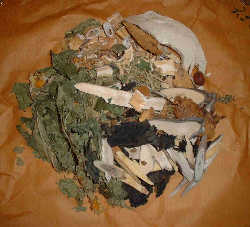
Chinese herbal medicine aims to prevent, diagnose, and treat diseases. It mainly consists of natural medicines and processed ones, namely medicines made from herbal, animal, mineral, and some chemical and biological substances. Although the invention and application of Chinese medicine has a history of thousand of years, the word "Chinese medicine" appeared only after Western medicine was introduced into China, to make a difference between the two.
 Natural Resources for Chinese Herbal Medicine
Natural Resources for Chinese Herbal Medicine
China enjoys a large territory, various geographical features, and different types of climate. These factors have given rise to different ecological environments, which enable it to grow a great variety of herbal plants. At present, China has cultivated more than 8,000 kinds of herbal medicines, 600 of which are commonly used. This makes China the country with the most number of herbal medicines in the world. These medicines not only meet the demands of domestic people but also are exported to 80 countries and regions where they enjoy great fame.
 Application of Chinese Medicine
Application of Chinese Medicine
Most of the ingredients of Chinese medicine come from natural resources, which have little or side effects. The multiple ingredients inside the medicines enable them to treat various diseases.
Another feature of Chinese herbal medicines is that they are mostly compounds. By being made with an appropriate proportion of different ingredients, the medicine can treat complicated diseases while maintaining the lowest possible side effects.
Application of Chinese medicine is based on its theory and focuses on the impact the
medicine has on the human body. The nature of the herbal plant determines the effectiveness of the medicine.
